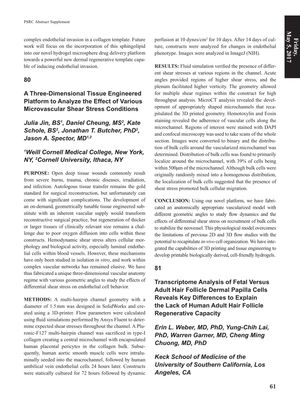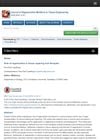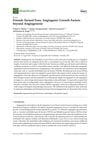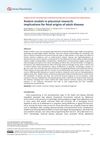Abstract 80
April 2017
in “
Plastic and Reconstructive Surgery – Global Open
”

TLDR Different levels of shear stress affect where cells move and gather in a 3D-printed model, helping to better understand cell behavior in blood vessels.
The document presents a study by Julia Jin and colleagues that aimed to develop a three-dimensional tissue-engineered platform to analyze the effects of various microvascular shear stress conditions on endothelial cell behavior. The study involved designing a multi-hairpin channel geometry with a diameter of 1.5 mm using 3D-printing and fluid simulations to create a model with different shear stress regions. Human placental pericytes and human aortic smooth muscle cells, followed by human umbilical vein endothelial cells, were seeded into the model. After 14 days of culture, including dynamic perfusion, the constructs were analyzed. The results showed that different shear stresses influenced the distribution of bulk cells, with a significant percentage localizing around the microchannel, suggesting that shear stress promoted cellular migration. The conclusion of the study was that the novel platform could replicate in-vivo cell organization and overcome limitations of previous studies, integrating 3D printing and tissue engineering to develop cell-friendly hydrogels for vascularized models.



